Borr Member
updated to follow: Stratigraphic Guide to the Rogaland Group, Norwegian North Sea. Harald Brunstad, Felix M. Gradstein, Jan Erik Lie, Øyvind Hammer, Dirk Munsterman, Gabi Ogg, and Michelle Hollerbach. Newsletter on Stratigraphy, vol 46/2 pp137-286, 2013.
Rogaland Group, Våle Formation
Unit definition
The Borr Member is attributed to the intra Våle Formation sandstones in the subarea of the
Norwegian Danish Basin to the Søgne Graben and the southeasternmost part of the Central
Trough, (Fig. 1 and Fig. 48).
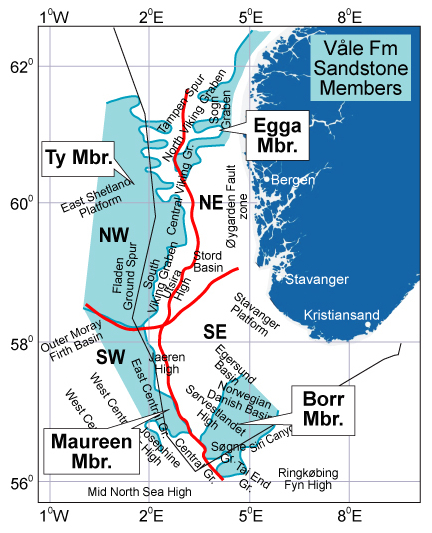 Fig 1: Location map of the Members of the Våle Formation. Fig 1: Location map of the Members of the Våle Formation. |
Name
The name Borr Member has been informally attributed to the sandstones in the lower part of
the Våle Formation in the Siri Valley, Danish North Sea since the sandstones were discovered
by Statoil in the mid 1990s. The sands are time equivalent to the lower Ty sands in the
Viking Graben and the Maureen Member of the Central Trough.
For the Norwegian North Sea we extend the definition to account for all easterly derived
sandstones in the Central Trough, Siri Valley and the Norwegian Danish Basin that are
enclosed in the Våle Formation.
Derivatio nominis
The Borr Member is named after Borr who was a Giant in the norse myths in Voluspб and
Gylfaginning.
Type well
For the Danish sector, Schiøler et al. (2007) have defined the DK well Augusta-1 as the type
well for the Borr Member (Fig. 55): Depth 2963.2-2940.5 m RKB. Coordinates N 56°17'57.40",
E 04°24'04.64". Cores no. 1, 2923.5-2889 m RKB.
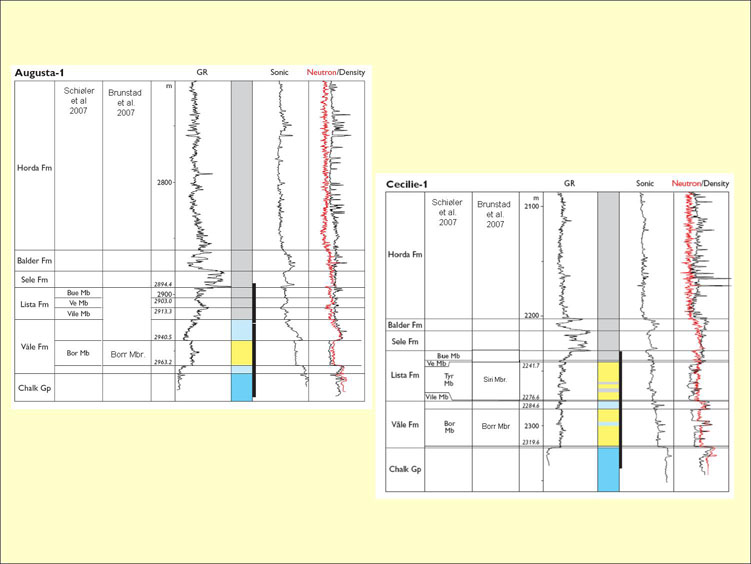
Fig. 55. DK Wells Augusta-1 (Type Well) and Cecilie-1 (reference well) composites log
Rogaland Group. Position of the Borr Member is seen in 2nd column from left. Modified from
Schiøler et al. 2007 to fit definitions made in the nomenclature for Norwegian North Sea
(this paper).
|
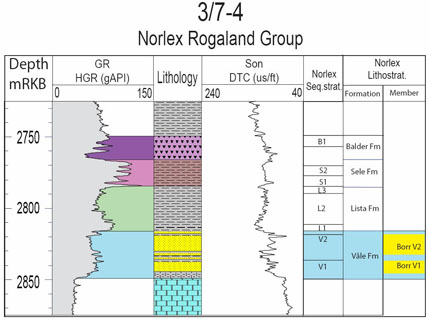
Fig. 56. Well 3/7-4 composite log Rogaland Group. Stratigraphic position of the Borr Member
is outlined in stratigraphic column to the right.
|
Reference wells
Norwegian well 3/7-4 (New) (Fig. 56).
Depth 2815-2845 m RKB. Coordinates N 56°24'15.60", E 04°14'22.24". In this study we
select 3/7-4 as a reference well for the Borr Member, Norwegian North Sea. So far there are no
cores from the Borr Member in any Norwegian wells.
Reference well for Danish sector: Cecilie-1 (Fig. 55). Depth 2319.6-2284.6 m RKB. Coordinates
N 56°24'23.73", E 04°45'42.00". Cores 2230-2336.4 m RKB.
A suitable reference section for the Borr Member is Norwegian well
3/6-1 (Fig. 57). Depth
2051-2092 m. Coordinates N 56°35'00.14", E 04°53'30.35". No cores from the Borr Member.
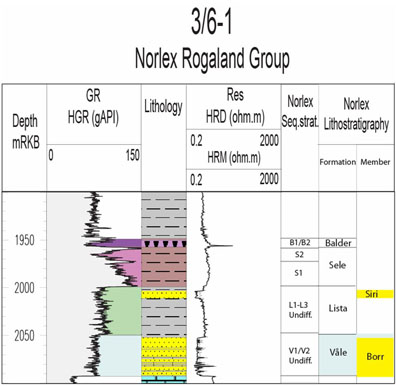
Fig. 57. Well 3/6-1 composite log Rogaland Group. Stratigraphic position of the Borr Member
is outlined in stratigraphic column to the right.
|
Composition
The Borr Member consists of olive-green, massive, clean sandstones of grain size varying from
very fine to fine grained. The sandstones are quartzitic and glauconitic (up to 25%), and
often calcite cemented, especially when sand layer thickness is limited. Mica and pyrite are
also present in small amounts.
Wireline log characterization
The wireline log appearance of the sandstones of the Borr Member relative to the
Våle Formation
above and below is variable. The response may be blocky, easily distinguishable with low
gamma-ray readings, to more subtle fine grained sands with a gradual transition from clay and
silt into very fine sand. From sonic and density logs thin bedded sandstones are often
carbonate cemented.
Lower boundary
The Borr Member rests on the marly shales of the Våle Formation or directly on the
Shetland
Group chalks. When the sandsones rest on the Shetland Group or a very calcareous Våle
Formation there is an upwards change from low gamma-ray readings and high velocities in the
calcareous sediments to higher gamma-ray readings and lower velocities in the Borr Member.
The lower boundary of the Borr Member can often be difficult to pick when the Våle Formation
is calcareous because the gamma-ray values in the two stratigraphic units can sometimes be
very similar.
When the Borr Member rests on less calcareous Våle Formation the response will depend on the
calcareous content. There is an upwards change from intermediate to low gamma-ray readings
and high velocities in the calcareous sediments to higher gamma-ray readings and lower
velocities in the Borr Member.
Upper boundary
The upper boundary is usually characterised by a downwards transition from somewhat higher
gamma-ray readings and lower velocity in the Våle or Lista Formation to lower gamma-ray
readings and higher velocity in the Borr Member.
Thickness
In the Norwegian North Sea the Borr Member is generally rather thin, and in the wells a
maximum thickness of 29 m is found in Norwegian well 3/7-3. In the Danish sector in
the Siri Valley sand fairway, the Borr Member reaches 24 m in Cecilie-1.
Seismic characterization
The top of the Borr Member is sometimes seismically well defined, and can be mapped out sub
regionally. Seismic character varies between one cycle sub-parallel to mounded facies.
Sometimes thicker infill of depressions or canyons in the substratum can be seen. Seismic 3D
amplitude maps of near top or base Våle formation sometimes display channel or fan shaped
geometries that represent submarine channels or fan systems. A seismic cross section
example from the southwestern part of the Søgne Graben is shown in Fig. 58, and a seismic
attribute map in Fig 59.
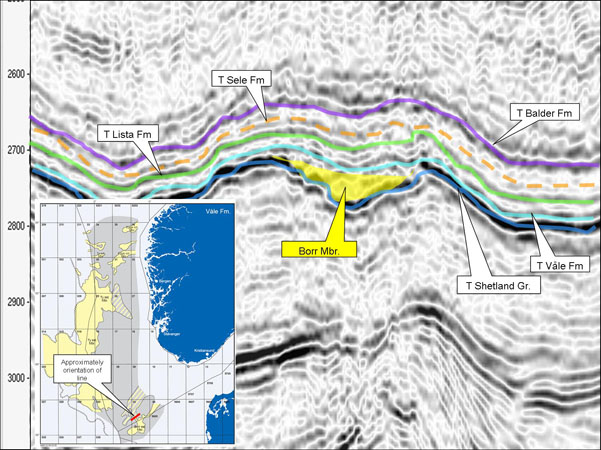
Fig. 58. Seismic SW/NE section through the Trym salt collapse structure, showing sandy
interval of the Borr Member filling in a collapse feature.
|
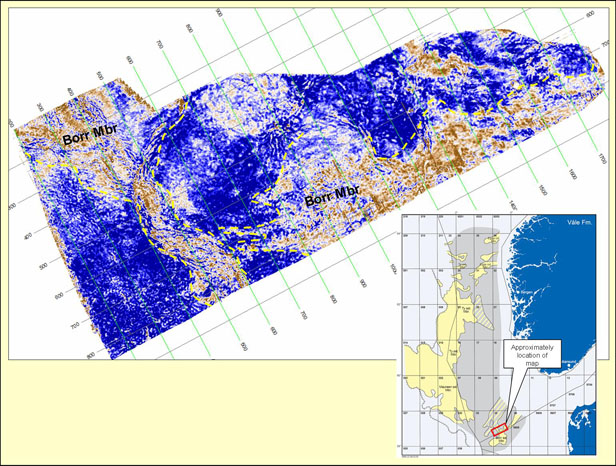
Fig. 59. Seismic map from block 3/7 and 3/8, showing amplitude at Top Våle Level. Red color
shows high amplitude, and inferred presence of Borr sandstone (proven in wells).
|
Age
Lower to Middle Paleocene (Danian-Early Selandian).
Biostratigraphy
Being contained in the Våle Formation, the age of the Borr Member is bounded by
biostratigraphy and age assignments for the Våle Formation. See description for the
Våle Formation in Subchapter 4.1.
Correlation and subdivision
The Borr Member is divided into Borr V1 Sub-member (Lower Borr Member) and Borr V2 Sub-member
(Upper Borr Member), following the subdivision of the Våle Formation.
Geographic distribution
The Borr Member is deposited in the Norwegian Danish Basin and the Siri Valley fairway, and
appears to have some offshoots westward into the Søgne Graben and the Central Trough (Fig. 48), where it is found in Norwegian wells 3/7-2, -3, -4. It is uncertain how far north the
Borr sandstones are distributed, but from seismic, mounded characters are seen far north in
the Egersund Basin which possibly indicates that the Borr Member is also present in that
area.
Depositional environment
The Borr Member is generally believed to have been deposited in a slope to deep marine
setting, mainly as highly concentrated gravity flow deposits. In eastern areas of the
Norwegian Danish basin, parts of the Borr Member may even have been deposited in a shelfal to
shallow marine environment.


 Fig 1: Location map of the Members of the Våle Formation.
Fig 1: Location map of the Members of the Våle Formation.


